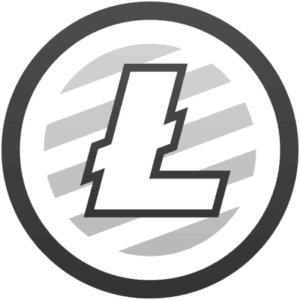 Charlie Lee, creator of Litecoin, outlined the current state of Litecoin in a live-streaming interview with Julian Hosp of TenX April 27th.
Charlie Lee, creator of Litecoin, outlined the current state of Litecoin in a live-streaming interview with Julian Hosp of TenX April 27th.
TenX are the makers of a crypto software wallet and debit card system that aims to,”make any blockchain asset spendable instantly.”
Overall, said Lee, he is happy with the status quo in Litecoin though he would like to “eventually” step back and see the coin become more decentralized. He also said he has been considering increasing the coin’s total supply, although, “Unless there’s a really good reason to change it, it’s better to just let it be.”
Litecoin is a fork of Bitcoin streamlined for faster processing of payments and signing of blocks. Blocks are settled four times faster in Litecoin than in Bitcoin, and the network will ultimately issue about four times as many “coins” as Bitcoin, or 84 million litecoins.
Litecoin is currently the seventh largest coin by market cap, according to coinmarketcap.com.
Charlie Lee was working at Google when he created Litecoin in 2013 and worked, until recently, as Head of Engineering at Coinbase.
 Lee told Hosp that he had never envisioned his coin having an adversarial relationship to Bitcoin:
Lee told Hosp that he had never envisioned his coin having an adversarial relationship to Bitcoin:
“I always saw Litecoin working closely with Bitcoin, being kind of a complimentary coin where people use Bitcoin and Litecoin for different purposes. I always thought that Bitcoin wouldn’t be the only coin because of Bitcoin’s focus on being the most decentralized and censorship-resistant coin. I always saw that the fees would go up. So Litecoin is cheaper to use but also I guess more centralized and a little bit less secure.”
Lee spoke about the pros and cons of his having assumed a more key role in Litecoin’s development of late:
“I think that it’s great that Bitcoin’s Satoshi Nakamoto sort of left the scene. If he was around…everyone would focus on him…it makes the coin more centralized. Which is the case with Litecoin. Litecoin is more centralized because I’m around…I can help steer Litecoin towards my vision and people will listen to me because I created it. What’s good about it is I can be more efficient…and a hard fork where there’s a is split in the middle would be harder…(T)he downside is that it’s a little bit more centralized than Bitcoin, so if some governments tried to coerce me into destroying Litecoin, that could happen…and it becomes less censorship resistant. If I have to I could push something that hurts Litecoin.”
Hosp asked if centralization could make a coin more ‘nimble’ in the market:
“With a fully decentralized coin like Bitcoin, it’s still doing fine. It’s still adapting to things…scaling… Its just a little bit slower, a little bit less efficient…I like to compare it to a democracy versus a benevolent dictatorship. Democracy is better, right? But it’s less efficient…(but) Does (a benevolent dictatorship) stay benevolent?”
Lee said he decided to start working full time on Litcoin when it, “really became viable… (although) to make it more decentralized, eventually I’ll step away.”
Litecoin continues to be focussed on it’s intention of becoming a payments coin, said Lee:
“The goal is to make spending crypto as easy or easier than using credit cards or whatever…What I mean is right now (customers) could be swiping a credit or debit card that is backed by crypto…and that’s the goal: where merchants will accept Litecoin and users will spend litecoins. And…in the future that I’m envisioning where cryptocurrencies actually become more stable and it’s the fiat currency that is hyper inflating, the merchants will just keep their balances in crypto…”
Lee said that he,”Doesn’t want to touch the mining algorithm,” in Litecoin. Litecoin was initially ASIC resistant, said Lee, because when a coin first comes out, its community is its miners, whereby it’s important that “anyone can mine.”
ASICs are powerful processors that outperform civilian-grade GPU computers in the mathematical contests “mining” computers engage in when running a cryptocurrency network.
“As the coin grew, it was no longer as important that anyone can be a miner. So I think that having ASICs is fine and…I think Litecoin has one of the strongest mining networks (after) Bitcoin.”
Lee said he, “(doesn’t) really believe in proof of stake,” (a less energy-consumptive system of securing a crypto network) and said he thinks that proof of work remains the best consensus algorithm for a decentralised currency, although, “proof of stake could work for a coin like Ethereum.”
Interestingly, Lee said he had, “Actually thought about (increasing the number of coins in the total supply) quite a bit recently,” because the sudden cessation of block (processing) rewards to miners could cause them to stop mining the network in favour of moving their computational power towards processing another coin that is still issuing block rewards.
“It’s hard to say what will (be best for the community) when we start reaching the (coin) limit (in Bitcoin because) right now Bitcoin only works because the mining reward is paying for the security, right? And when that goes to zero (in approximately 2140) and you rely on fees and if the fees aren’t enough because the block size is constrained, right, then what happens? The security will drop…It’s something that I’m thinking far in the future because it will be much harder to change…when the network is (bigger and) more decentralized.”
“(Changing the total supply) is something I’m thinking about, but nothing concrete, yet,” he said.
https://www.youtube.com/watch?v=aHOcTllK1_c

